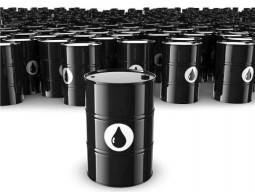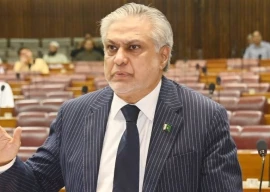
However, nobody seems to be giving a serious consideration to the question whether Pakistan has the capacity to pump gas to more consumers.
Over the years, persistent energy shortage has restricted economic growth of the country, but at the same time it has become a key component of the election manifesto. The ruling PML-N made the resolution of energy scarcity a major plank of its poll campaign and based on that beat the PPP and came to power in mid-2013.
Pakistan’s oil production increases 11% in January
Later, the PML-N set different deadlines to do away with the electricity crisis. Four years are gone, widespread load-shedding, which extends up to 15 to 18 hours a day in rural areas, still haunts the ordinary people and businesses. In the latest time frame, the government claims that power outages will come to an end in mid-2018. Only time will tell whether it will keep the promise or miss the deadline again like previous ones.
In the meantime, the looming gas crisis cannot be ignored as the cabinet has lifted a moratorium on new gas supply schemes, which had been in place since 2009.
As elections are only about a year away, Prime Minister Nawaz Sharif has eased the restriction and approved 97 gas development schemes, mostly for Punjab – a stronghold of the PML-N. The cabinet has also given its ex-post facto approval to the gas schemes.
The premier has used his discretionary powers in approving the gas supply schemes, though the apex court during the tenure of former PPP prime minister Raja Pervez Ashraf had ruled that the constitution did not allow allocation of funds to the MNAs, MPAs and notables at the sole discretion of prime minister and chief minister. The court called the practice illegal and unconstitutional. The present government approached the Supreme Court, seeking a review of the decision, but the request was turned down.
While launching the new gas schemes, the government has increasingly focused on Punjab. Sindh has lodged protest over being sidelined.
According to Article 158 of the constitution, gas-producing provinces have the first right to consume gas. Sindh, Khyber-Pakhtunkhwa and Balochistan have a major share in gas production.
If this article is implemented truly, the gas supply schemes in Punjab, which has a minuscule share in gas production, will raise eyebrows.
CCI has a role to play
Experts and officials suggest that the government should have taken up with the Council of Common Interests (CCI) – an inter-provincial body having representation from all provinces – the lifting of the moratorium on gas schemes. This would have strengthened the federation.
Public utilities – Sui Southern Gas Company (SSGC) and Sui Northern Gas Pipelines (SNGPL) – will find it hard to provide energy for the new consumers as the existing ones already endure shortages in the winter season.
Under the law, the utilities are bound to first provide gas for the existing consumers before building infrastructure for the new schemes.
As the events unfold, the Oil and Gas Regulatory Authority (Ogra) has remained a silent spectator. The government has also not bothered to seek comments of the regulator that sets the target of gas connections annually for the utilities.
Pending requests
At present, 1.5 million applications are awaiting SNGPL’s approval for the installation of gas meters. Instead of entertaining these requests first, the government has lifted the ban on new gas supply schemes.
Domestic natural gas production has been stagnant at 4 billion cubic feet per day for over a decade. During the first four years of the current government, 500 million cubic feet per day (mmcfd) has been added to the system, but at the same time production from existing fields has dropped 600 mmcfd.
Ministry seeks more gas supply to power plants
Gas reserves of big fields like Sui and Qadirpur are depleting and no new massive fields have been discovered to cater to the needs in the future.
With the extension in pipeline infrastructure, consumers will be the losers and gas companies will be the winners. Gas utilities will receive a guaranteed rate of return on increased assets whereas the consumers will face more shortages.
A fresh source of energy is the re-gasified liquefied natural gas (RLNG) for which a policy has been approved for supplies to bulk domestic, commercial and industrial consumers. However, LNG proves expensive for the domestic consumers living in villages.
In many countries, the pipeline network is not found. Gas is either consumed by the industry or exported in the form of RLNG. Domestic consumers use liquefied petroleum gas (LPG).
In Pakistan, natural gas is consumed in villages and towns rather than LPG. The PPP government had tried to frame a policy to subsidise LPG for the domestic consumers rather than piped gas. However, the plan could not be pushed ahead.
The present government could formulate such a policy in order to divert gas to the power plants that were shut down due to fuel shortage. This will result in cheap electricity. But such policies are adopted that promise voter support in general elections.
the writer is a staff correspondent
Published in The Express Tribune, April 17th, 2017.
Like Business on Facebook, follow @TribuneBiz on Twitter to stay informed and join in the conversation.












































COMMENTS (1)
Comments are moderated and generally will be posted if they are on-topic and not abusive.
For more information, please see our Comments FAQ